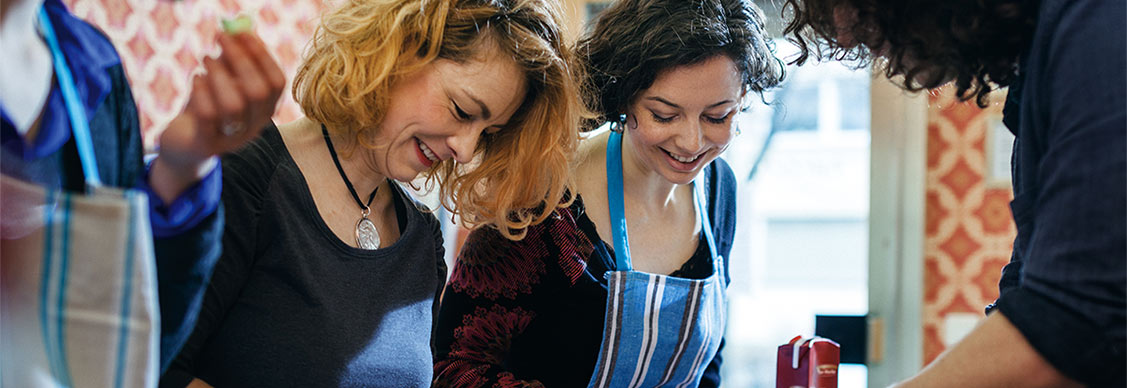This is how companies are reunifying distributed teams
Managers are thinking creatively to inspire workers as collaboration dips
One of the greatest challenges for companies where hybrid working has become the norm is how to bring workers together to collaborate.
At the core of the issue are concerns about sharing ideas, which come from basic, usually random social interactions that happen naturally in offices. The theory is that when it’s missing, productivity falls. In the U.S., productivity in the first half of 2022 declined by the sharpest rate on record going back to 1947, according to the country’s Bureau of Labor Statistics.
Efforts to boost collaboration in the age of hybrid work have been hit and miss. Companies have tried a raft of initiatives, from mandating employee days in the office to using digital whiteboards, to varying degrees of success.
However, one that seems to be used most often is collaboration-centred social events, from sustainable cooking classes to outdoor experiences, for a dose of company culture and inspiration.
“Initiatives that reconnect teams through social events help build the social capital that underpins high performance,” says Gillian Rowbotham, human experience lead – Australasia, JLL. “Being part of their organisational culture is something that people were really missing working away from the office in isolation.”
Since the pandemic, employees have become increasingly disengaged. Nearly a quarter of employees have considered leaving their jobs if they feel their needs are no longer recognised by their company, according to JLL’s Workforce Preferences Barometer.
This includes hybrid working, with the report revealing that three in four employees consider remote working a non-negotiable factor in staying in their current role.
A collaborative workplace will generate more productivity, creativity and build team culture, Rowbotham says. Some managers are trying to encourage this by organising their teams to come back into the office on the same days of the week, as opposed to being fragmented working remotely. “People feel they’ve earned the commute and it brings teams together,” Rowbotham says.
There are also numerous examples of how organisations are stretching beyond the corporate office to generate culture and experience.
For example, PwC spent $15m hosting "The Outside,” an outdoor experience in rural Australia for 2,700 employees, and Salesforce has a ‘trailblazer ranch’ – a 75-acre property among the Californian redwoods.
Accenture opened an innovation hub in its Tokyo office – an experience-driven, state-of-the-art facility for collaboration between colleagues, clients and partners.
The Human Hotel, which counts Greenpeace and Pleo as its customers, is a platform that facilitates in-home dinners and homestays provided by colleagues across cities and countries, to help them connect.
‘Zero-waste’ cooking classes weave company and personal values into a fun activity.
“This type of class contributes to all of the elements that are important to reunifying teams,” Rowbotham says. “It’s inclusive, aligned to sustainability goals and contributes to social capital and organisational culture.”
However, activations aimed and building culture and innovation will be futile if they are mis-targeted, Rowbotham warns.
"Demographics are really important. By understanding needs and preferences, we can focus on creating a purpose for coming to the office, or together elsewhere, that aligns.”
Hybrid the new normal
In JLL’s 2022 Future of Work survey, 72% of 1095 corporate real estate decision-makers surveyed across the globe agree that the office will remain central in a long-term hybrid work era.
The number of employers that have still not offered hybrid working has dropped from 45% pre-pandemic to 9% today.
“We’re not going to go back to normal so new solutions are being sought,” says Bryan Froud, director of collaboration design. “If employers enforce four to five days working from the office, 30-50% of employees will start looking elsewhere.”
Extravagant offsite events might be just the trick for some. For others, it’s taking advantage of conveniences introduced by savvy employers to support post-pandemic lifestyle choices.
Businesses such as fashion label Cotton On are providing childcare facilities in workplaces, organising holiday programs, and allowing parents to bring children into work on designated days.
More ways to innovate
During the Prohibition era in the U.S. in the 1920s and 1930s when consumption of alcohol was illegal, the number of patents lodged decreased as public drinking spots closed, revealing that social interaction post-work increased productivity and innovation. Whether the same decline occurs following global Covid-19 lockdowns is yet to be seen, but it does highlight the importance and value that working and socialising can bring.
“Innovation doesn’t have to be sacrificed because people are not physically together. In fact, innovation usually happens when people come together from different teams, have diverse backgrounds, or unique ways of thinking,” says San Francisco-based Katie Rodrigues, managing director, consulting, JLL.
“We are seeing that companies haven’t invested in technology in the workplace, up-skilled around using the tech or figured out the right ways to use the tools and resources they have to untap the possibilities of innovation and collective creative thinking. Crowdsourcing ideas and working asynchronously are other ways to spark innovation.
“Embracing more diverse experiences and people to solve problems can be supported by having virtual and distributed engagement.”
